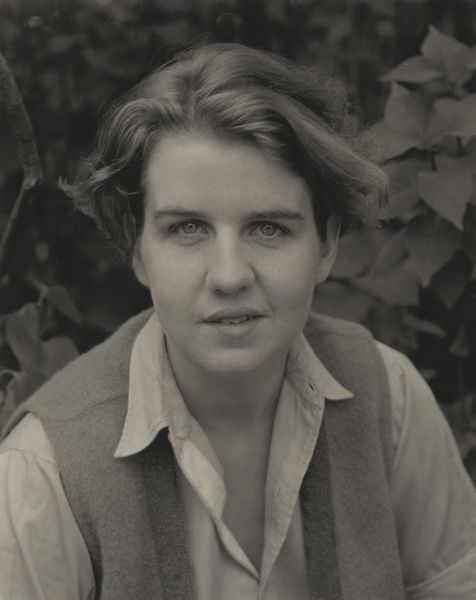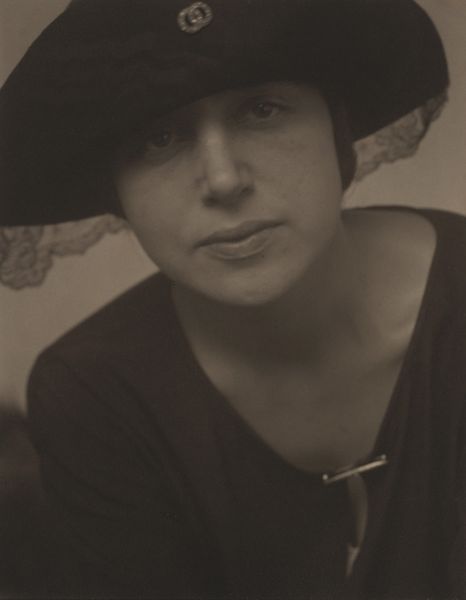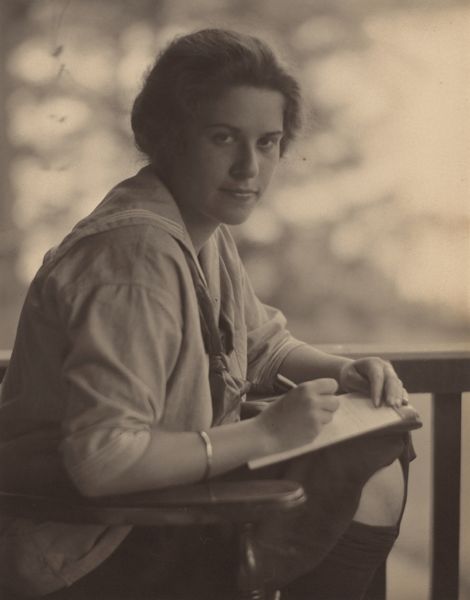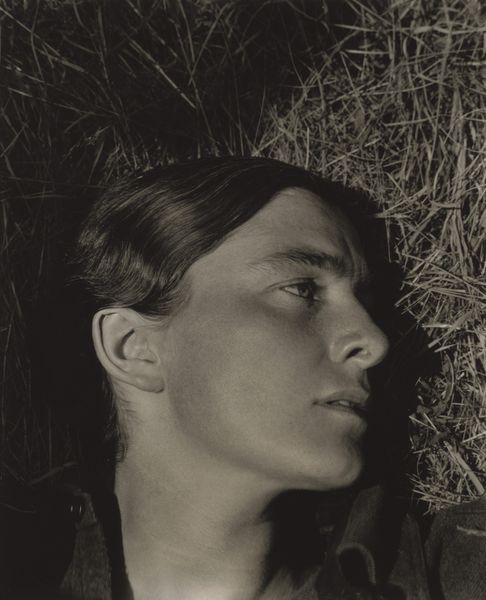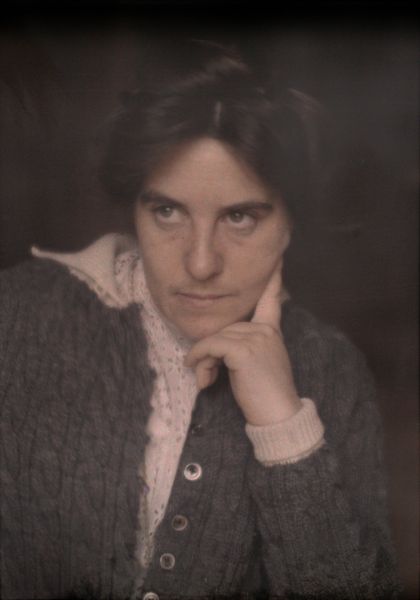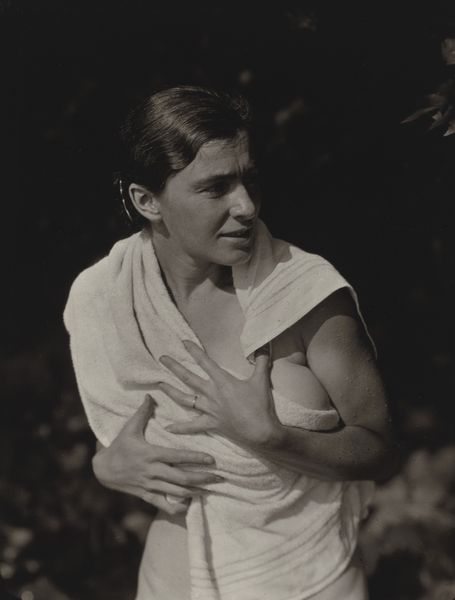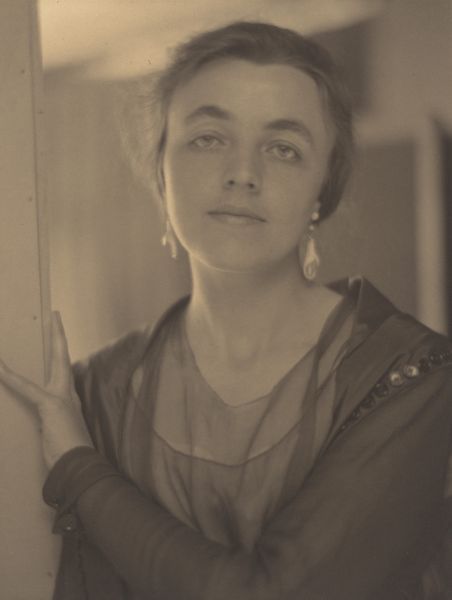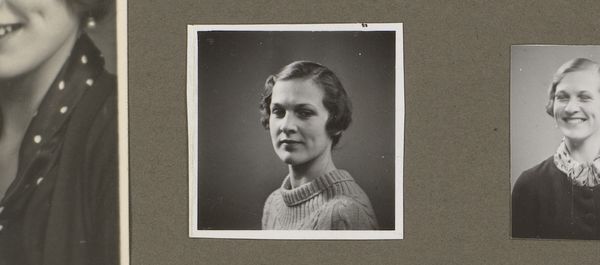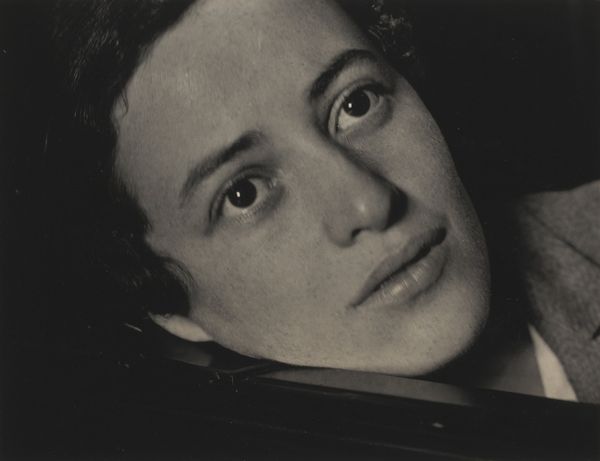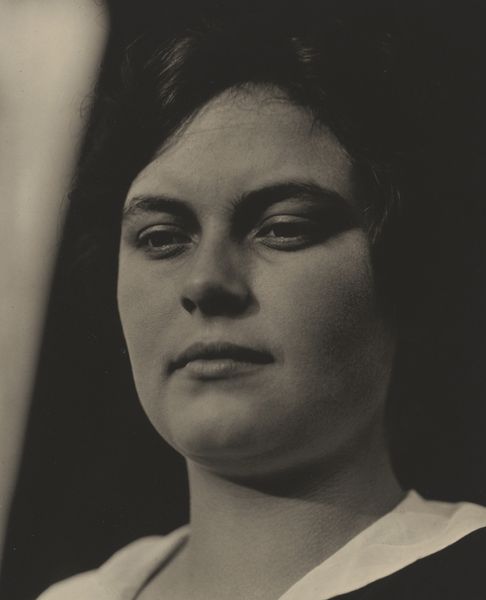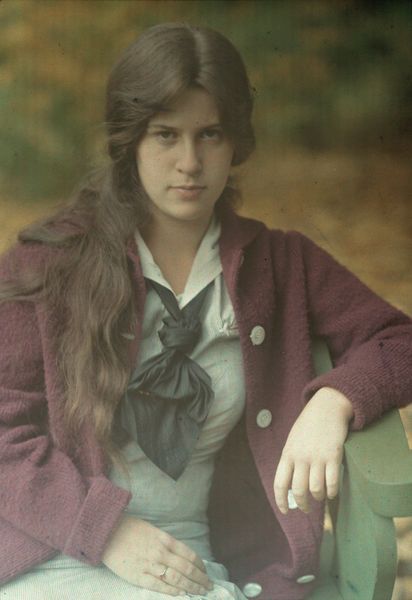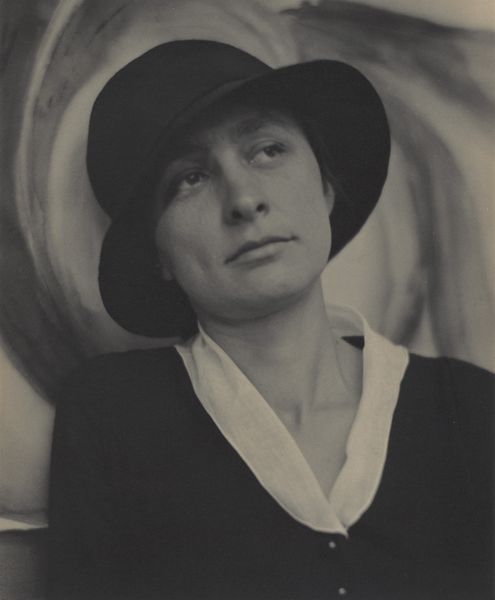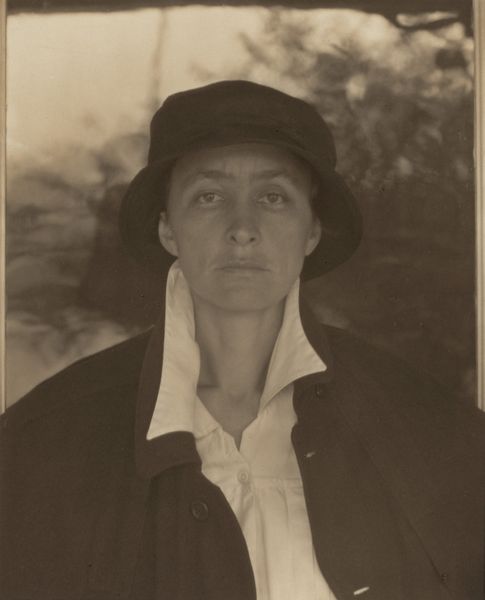
photography
#
portrait
#
pictorialism
#
portrait
#
photography
#
realism
Dimensions: sheet (trimmed to image): 11.6 × 9.1 cm (4 9/16 × 3 9/16 in.) mount: 34.6 × 27.6 cm (13 5/8 × 10 7/8 in.)
Copyright: National Gallery of Art: CC0 1.0
Curator: Alfred Stieglitz captured this intriguing portrait of Ethel Tyrrell in 1926. It's a photographic study steeped in the aesthetics of pictorialism. Editor: Wow, her eyes really pull you in, don't they? There's a quiet intensity about this image; she almost seems to be daring you to look away. It makes me wonder about her story, you know? What was she thinking at that moment? Curator: That's what I find compelling, too. The pose, while seemingly simple, speaks volumes about female representation at the time. There's a reclaiming of the gaze, a direct challenge to the male-dominated art world and a statement on female authorship of her own image. Ethel’s intellectual engagement counters traditional passive portrayals of women. Editor: Totally! It’s that confidence—and also, the vest she's wearing! I mean, is it just me, or does she have this air of comfortable nonconformity, a silent rebellion simmering beneath the surface? You imagine her hanging out in smoky cafes, arguing about philosophy and art...I mean, maybe that's just my imagination running wild! Curator: It very well might be, but your imagination isn't entirely off base. During this period there was a real shifting away from Victorian constructs of women. You know Stieglitz often photographed the women in his life and his works can be seen as celebrations of intellectualism, love, or particular gendered social roles. Editor: Makes you think, doesn't it? That even a seemingly straightforward portrait like this holds layers and layers of meaning, depending on how you choose to see it. Makes you want to go back to 1926, sit beside her and just listen! Curator: Exactly. Considering the intersectional narratives about gender, identity, and representation, a portrait such as this isn't just a depiction of a person but an interrogation of societal expectations of a certain period. Editor: It's a really beautiful example of the quiet power of a single, well-executed image.
Comments
No comments
Be the first to comment and join the conversation on the ultimate creative platform.
